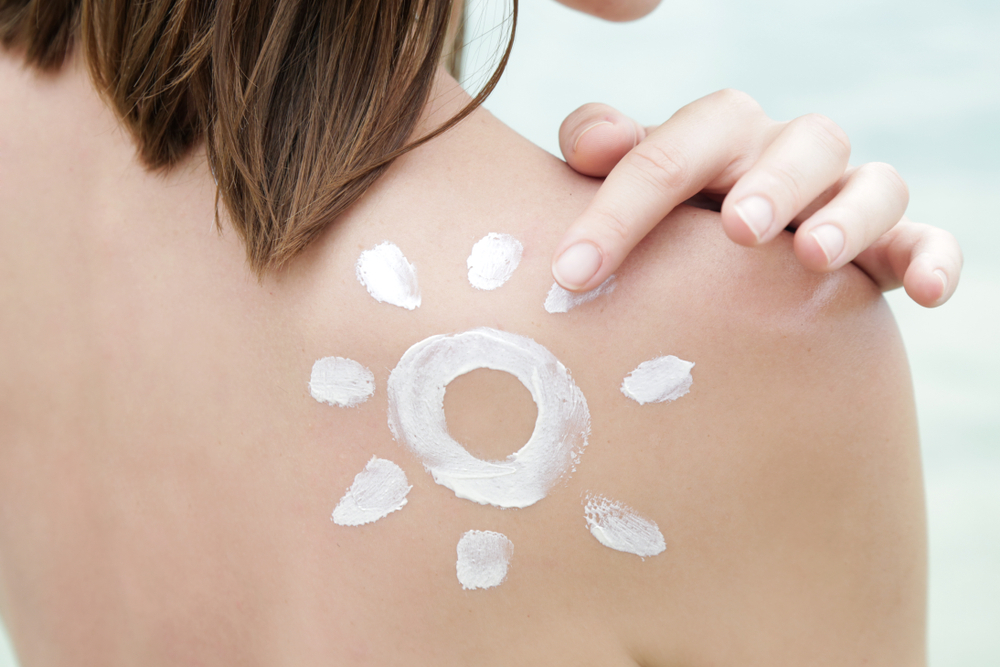Mineral sun cream does not have it easy. It must fight against prejudices: ‘It makes the whole face white’, ‘it does not work as well against UV rays as the latest chemical filters’. Is this true? Or is mineral sun cream perhaps the only true sun protection?
Mineral sunscreen versus chemical filters
Certified natural cosmetics do not work without them: Mineral UV filters are in the organic sun cream, which guarantees UV protection without side effects. Mineral sun cream, usually with particles of titanium oxide or zinc oxide, forms a reflective layer on the skin that reflects the sun’s rays like a mirror. They have a superficial and purely physical effect – in contrast to chemical filters. They penetrate the upper layers of the skin and convert the UV radiation into thermal energy. Chemical UV filters found in conventional sun creams can trigger allergies and are suspected of acting like hormones in the body – so pregnant women and nursing mothers should be particularly careful with sunscreen.
Is mineral sun protection better?
Whether sunscreen with a mineral filter is the better alternative to conventional sun protection with chemical filters is a matter for everyone to decide for themselves. The high-end products with high light protection filters naturally have the advantage that their textures are extremely easy to apply and blend with the skin. The new sun creams often contain nourishing additives that aim to prevent the skin from drying out and have an anti-aging effect in parallel with sun protection. In the meantime, mineral and chemical filters are often mixed together to combine the advantages of both.
With nano or without?
- Nanoparticles in sunscreen are under discussion. Critics fear that their microscopic structure could penetrate through the skin into the body and accumulate in organs, even cause cancer or damage the brain and nervous system. There are no long-term studies on the effect of nanoparticles in the body yet.
- However, current studies give the all-clear for the time being: nanoparticles cannot penetrate into human skin cells, but remain on the skin surface.
- If the skin does not have any small wounds, there is no danger anyway: healthy skin forms a barrier that nanoparticles cannot penetrate into the body. Problem: Who thinks of microfine injuries when applying lotion?
- Mineral sunscreen without nanoparticles often only provides sun protection with SPF 30, otherwise it turns into a white paste that can hardly be spread.
- How nanoparticles affect our environment is also unclear. One thing is certain: Nanoparticles can dissolve in water and pollute ecosystems.
Mineral sun cream with nanoparticles
Mineral UV filters are also available in nano size. This is because splitting up mineral pigments has many cosmetic advantages: A white film no longer forms on the skin, as was previously the case with mineral sun creams with a high sun protection factor. A sun protection factor between 30 and 50 is also possible without any problems. Zinc oxide or titanium dioxide may be present as nanoparticles in a sun cream with a proportion of up to 25 percent. Problem: Under the influence of UV rays, nano-zinc oxide and nano-titanium dioxide can produce so-called free radicals. These aggressive molecules can damage the skin structure and DNA.
Can I see if nanoparticles are in my sunscreen?
Don’t worry, Manufacturers must declare nanoparticles on the product packaging. In most cases, the notice is even prominently displayed on the tube. Those who want to be on the safe side check the INCI list or enter the product into the product check portal Codecheck, where the INCI lists of thousands of beauty products are listed and evaluated according to their ingredients.
Not only the skin needs sun protection…
Those who want to protect their skin should use sunscreen, but sun protection for hair is also an important issue.

